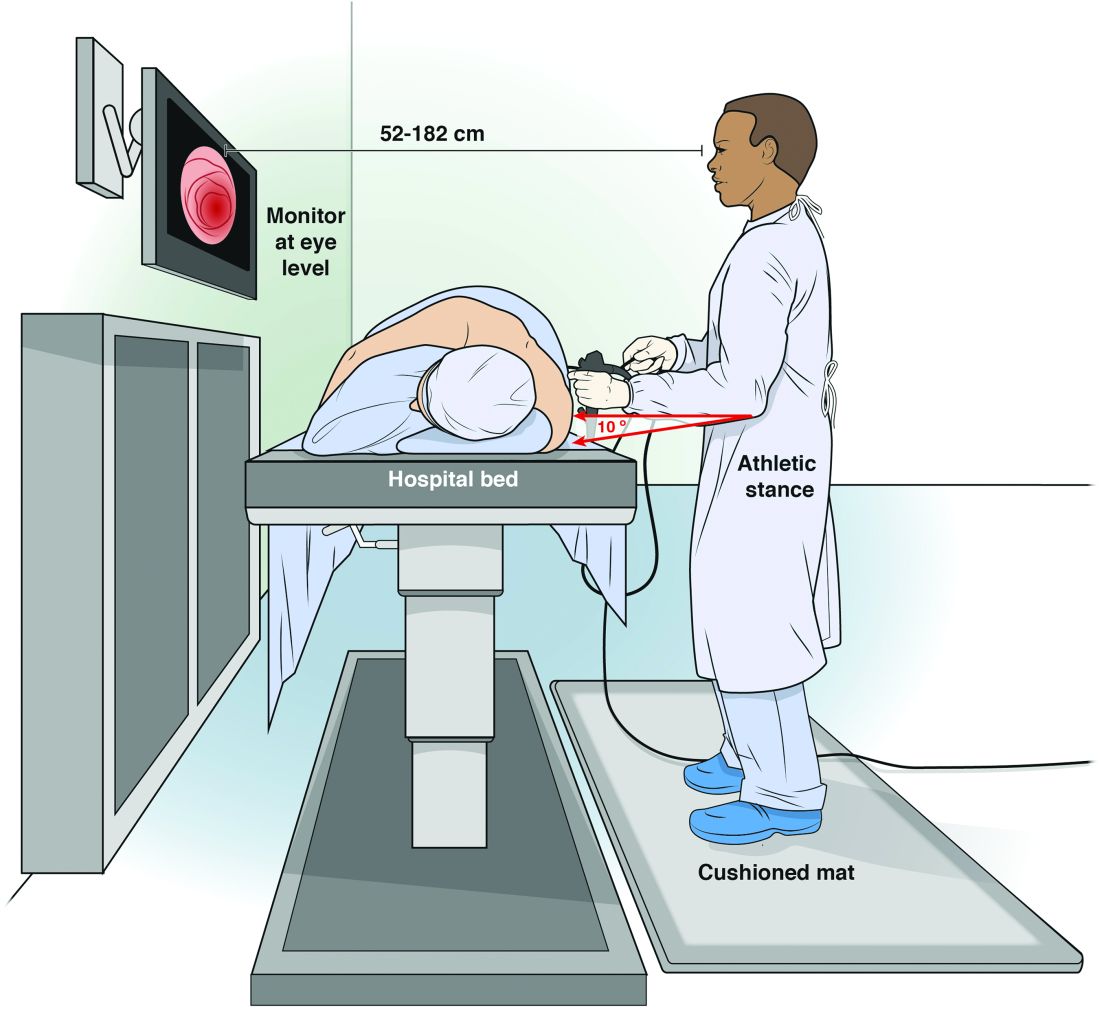To the early trainee, often the goal of performing a colonoscopy is to reach the cecum using whatever technique necessary. Although the recommended amount of colonoscopies for safe independent practice is 140 (with some sources stating more than 500), this only relates to the safety of the patient.1 We receive scant education on how to form good procedural habits to preserve our own safety and efficiency over the course of our career. Here are some tips on how to prevent injury:
Position the room for your comfort. Place the patient’s bed at a level that allows for a working angle of 10 degrees to improve your posture. Having an inappropriately low bed forces a slouched posture which increases thoracic kyphosis and energy expenditure during procedure. Assuming a slouched posture decreases arm elevation, movement velocity, and peak muscle activity while increasing the amount of energy expenditure.2 Over time this leads to neck and shoulder pain and disability in endoscopists. An inappropriately high bed increases lumbar lordosis which can lead to increased low back pain and suboptimal working angles of the shoulder. Poor monitor placement is a major risk factor for musculoskeletal injuries.3 Monitors should be optimally placed between 52 and 182 cm in front of the endoscopist aligned in both the vertical and horizontal axis. Misalignment of gaze in the horizontal axis contracts splenius capitis and sternocleidomastoid muscles with degree of contraction aligning with the degree of rotation.4 Similarly, misalignment of gaze in the vertical axis dictates the amount of paraspinal muscle activity occurring. When able, monitors should be adjusted prior to starting the procedure to ease fatigue of the endoscopist.



